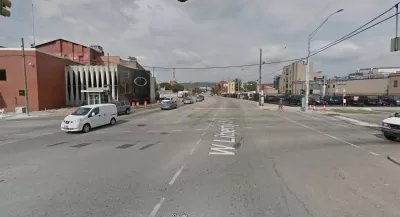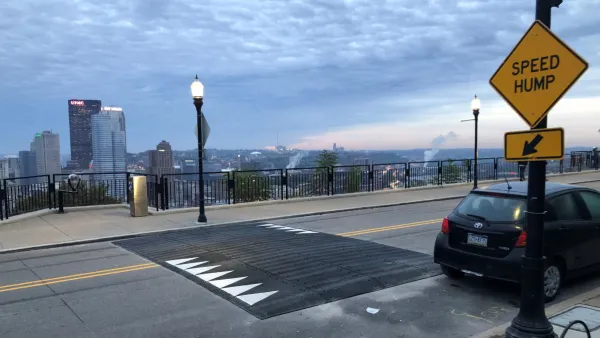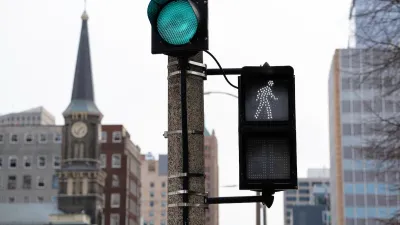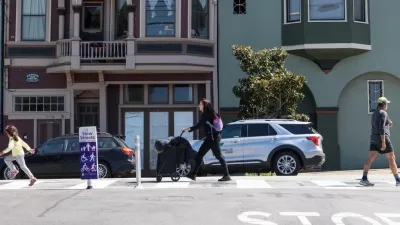A proposal before Cincinnati's city council would boost traffic calming initiatives and use innovative technology to slow traffic on some of the city's most dangerous streets.

After a year in which 300 pedestrians were struck by vehicles and seven killed in Cincinnati, Cameron Knight reports that the city could boost its traffic safety programs with additional investment in traffic calming, if a proposal co-sponsored by Councilman Mark Jeffreys and Mayor Aftab Pureval passes.
"Department of Transportation and Engineering Director John Brazina said the $1 million injection doubles the current budget for pedestrian safety. Ten neighborhoods were planned to see improvements this year, but now 30 will be included in the project."
The plan includes installation of four types of devices, including "speed cushions," a speed bump that accommodates emergency vehicles driving at full speed while slowing regular cars. "The next two devices – slow turn wedges and hardened centerlines – are meant to force drivers to make sharper turns at intersections. This should slow drivers down because they won't be able to make sweeping turns at higher speeds. The devices also push drivers to enter further into the intersections before turning, giving them better visibility."
The fourth device is being dubbed "artistic bump-outs," writes Knight. This initiative would cut the cost and deployment time of bump-outs, which usually cost $80,000 to $100,000 per set, according to Councilman Mark Jeffreys. "Neighborhoods will have the ability to stylize and decorate the bump-outs in unique ways."
If approved by the city council, the proposal would use funding from the American Rescue Plan Act to support 30 projects around the city.
FULL STORY: Cincinnati's $1 million pedestrian safety measure would use new ideas to slow traffic

Planetizen Federal Action Tracker
A weekly monitor of how Trump’s orders and actions are impacting planners and planning in America.

Map: Where Senate Republicans Want to Sell Your Public Lands
For public land advocates, the Senate Republicans’ proposal to sell millions of acres of public land in the West is “the biggest fight of their careers.”

Restaurant Patios Were a Pandemic Win — Why Were They so Hard to Keep?
Social distancing requirements and changes in travel patterns prompted cities to pilot new uses for street and sidewalk space. Then it got complicated.

Platform Pilsner: Vancouver Transit Agency Releases... a Beer?
TransLink will receive a portion of every sale of the four-pack.

Toronto Weighs Cheaper Transit, Parking Hikes for Major Events
Special event rates would take effect during large festivals, sports games and concerts to ‘discourage driving, manage congestion and free up space for transit.”

Berlin to Consider Car-Free Zone Larger Than Manhattan
The area bound by the 22-mile Ringbahn would still allow 12 uses of a private automobile per year per person, and several other exemptions.
Urban Design for Planners 1: Software Tools
This six-course series explores essential urban design concepts using open source software and equips planners with the tools they need to participate fully in the urban design process.
Planning for Universal Design
Learn the tools for implementing Universal Design in planning regulations.
Heyer Gruel & Associates PA
JM Goldson LLC
Custer County Colorado
City of Camden Redevelopment Agency
City of Astoria
Transportation Research & Education Center (TREC) at Portland State University
Camden Redevelopment Agency
City of Claremont
Municipality of Princeton (NJ)





























